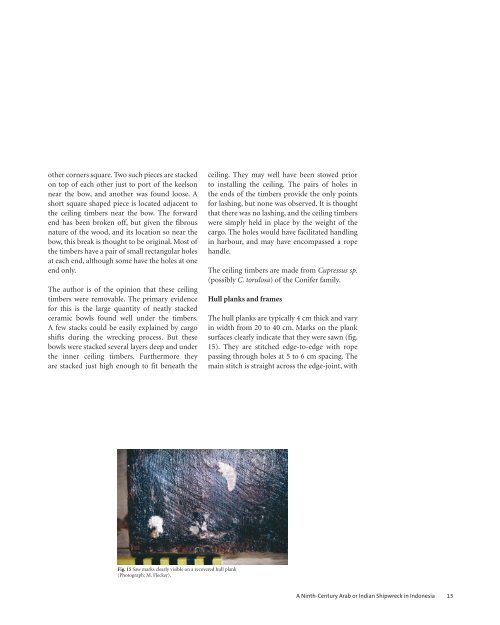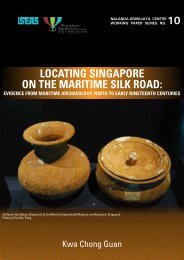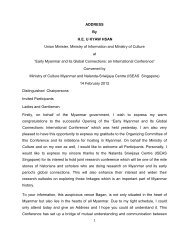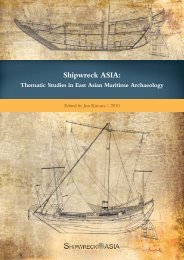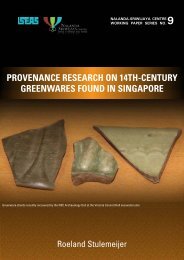Create successful ePaper yourself
Turn your PDF publications into a flip-book with our unique Google optimized e-Paper software.
other corners square. Two such pieces are stacked<br />
on top of each other just to port of the keelson<br />
near the bow, and another was found loose. A<br />
short square shaped piece is located adjacent to<br />
the ceiling timbers near the bow. The forward<br />
end has been broken off, but given the fibrous<br />
nature of the wood, and its location so near the<br />
bow, this break is thought to be original. Most of<br />
the timbers have a pair of small rectangular holes<br />
at each end, although some have the holes at one<br />
end only.<br />
The author is of the opinion that these ceiling<br />
timbers were removable. The primary evidence<br />
for this is the large quantity of neatly stacked<br />
ceramic bowls found well under the timbers.<br />
A few stacks could be easily explained by cargo<br />
shifts during the wrecking process. But these<br />
bowls were stacked several layers deep and under<br />
the inner ceiling timbers. Furthermore they<br />
are stacked just high enough to fit beneath the<br />
ceiling. They may well have been stowed prior<br />
to installing the ceiling. The pairs of holes in<br />
the ends of the timbers provide the only points<br />
for lashing, but none was observed. It is thought<br />
that there was no lashing, and the ceiling timbers<br />
were simply held in place by the weight of the<br />
cargo. The holes would have facilitated handling<br />
in harbour, and may have encompassed a rope<br />
handle.<br />
The ceiling timbers are made from Cupressus sp.<br />
(possibly C. torulosa) of the Conifer family.<br />
Hull planks and frames<br />
The hull planks are typically 4 cm thick and vary<br />
in width from 20 to 40 cm. Marks on the plank<br />
surfaces clearly indicate that they were sawn (fig.<br />
15). They are stitched edge-to-edge with rope<br />
passing through holes at 5 to 6 cm spacing. The<br />
main stitch is straight across the edge-joint, with<br />
Fig. 15 Saw marks clearly visible on a recovered hull plank<br />
(Photograph: M. <strong>Flecker</strong>).<br />
A Ninth-Century Arab or Indian Shipwreck in Indonesia 13


